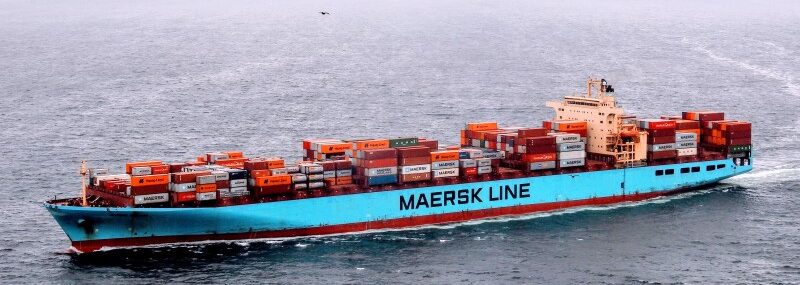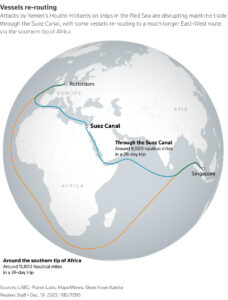Denmark’s shipping giant Maersk has redirected four out of five container vessels initially stuck in the Red Sea back toward the Suez Canal, opting to take the longer journey around Africa to mitigate the risk of attacks by Yemen-based Houthi militants. The recent attacks in the southern Red Sea, including one on a Maersk ship, have disrupted global trade and led to a surge in shipping rates, raising concerns about potential global inflation. Despite a multinational operation launched by the United States on December 19 to safeguard commerce in the Red Sea, many shipping companies, including Maersk, are still choosing to divert vessels around Africa.
Previously, Maersk had briefly considered resuming Red Sea voyages but later decided to continue avoiding the route that provides access to the Suez Canal, a crucial shortcut between Asia and Europe. Five Maersk ships originally heading towards Asia had traversed the canal from the north and were about to travel south past Yemen when the decision to pause was announced, leaving crews and tens of thousands of containers in a state of uncertainty.
The container vessels—Maersk Genoa, Maersk Londrina, Ebba Maersk, and Gjertrud Maersk—located in the Red Sea just south of Saudi Arabia’s port of Jeddah, were rerouted around the Cape of Good Hope, as indicated by Maersk’s schedule. A fifth vessel, Maersk Utah, which had also been stuck in the area, had not yet been rerouted, but Maersk confirmed that it would not sail past Yemen.
Opting for the longer route around Africa comes with additional costs, including fresh fees for canal passage, significant delays, and extra fuel expenses. In response to the disruptions, Maersk had implemented a transit disruption surcharge (TDS) and a peak season surcharge (PSS) last month, increasing the total cost of a standard 20-foot container journey from China to Northern Europe by $700. With approximately one-third of global container ship cargo passing through the Suez Canal, redirecting ships around the southern tip of Africa is estimated to incur up to an additional $1 million in fuel costs for each round trip between Asia and Northern Europe.
SOURCE: Reuters




